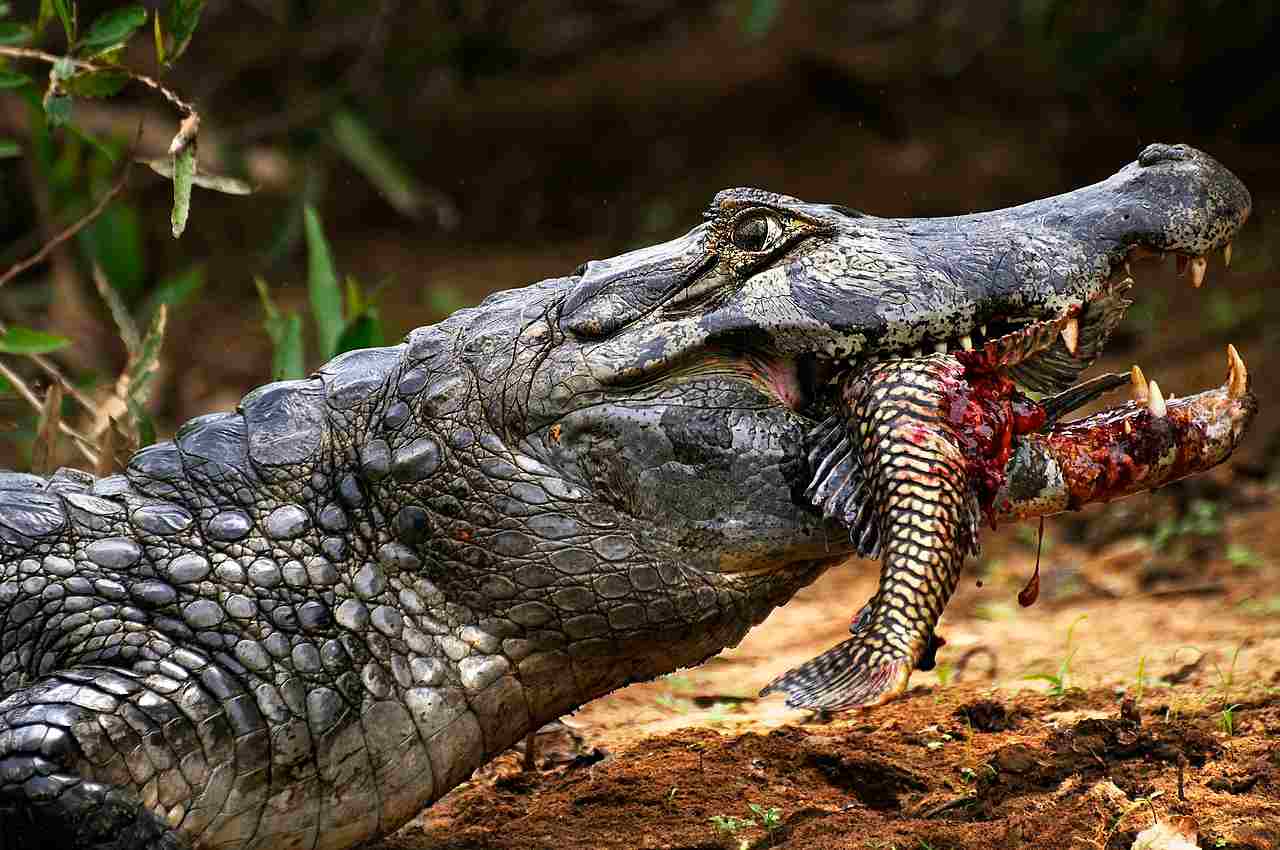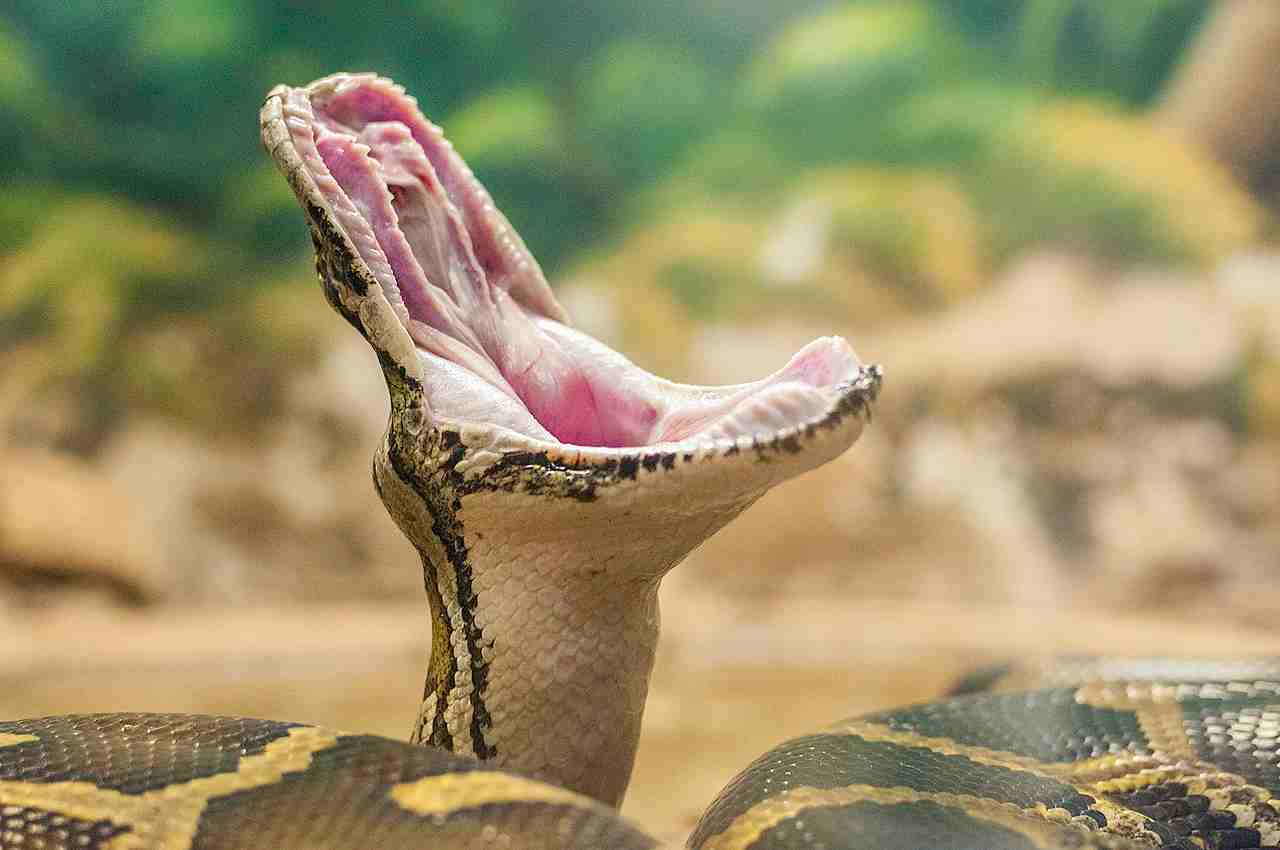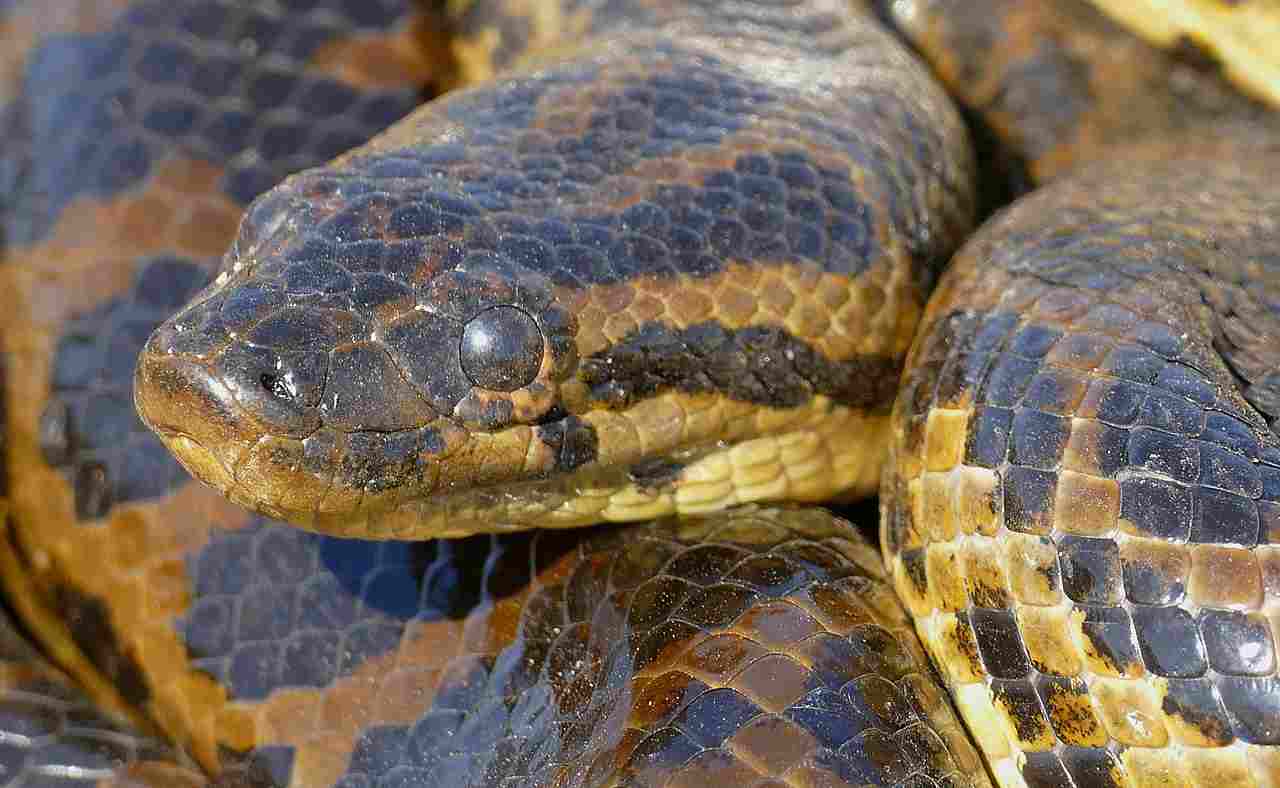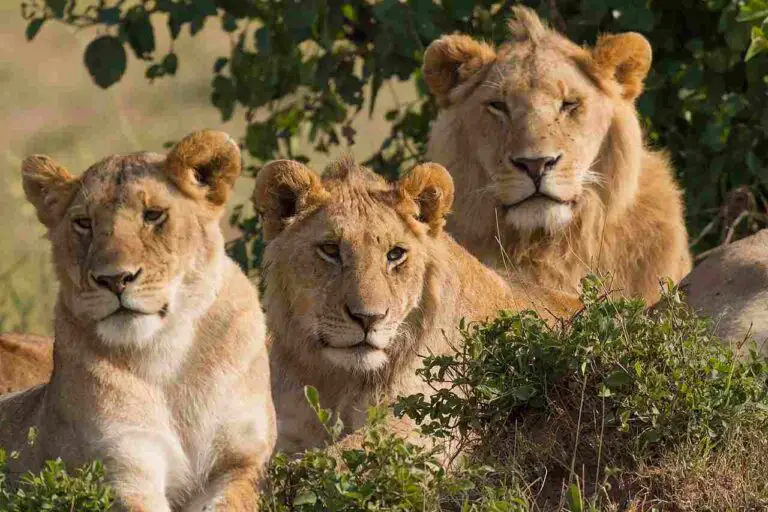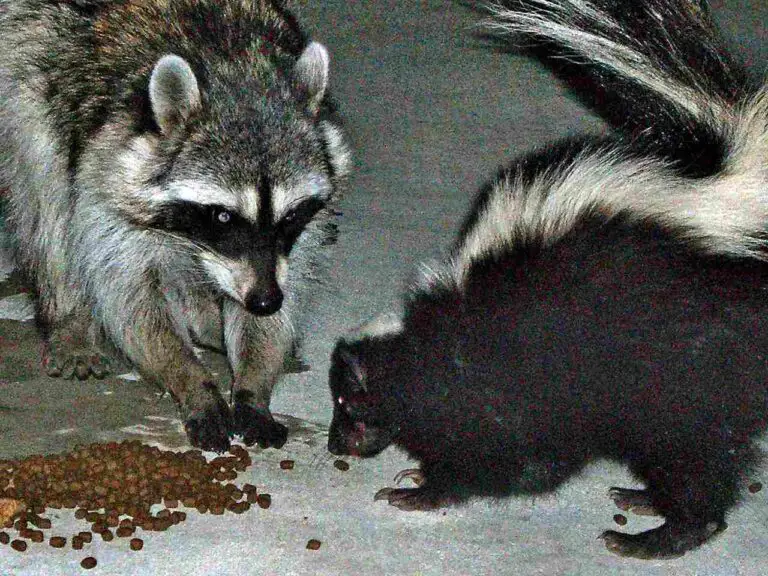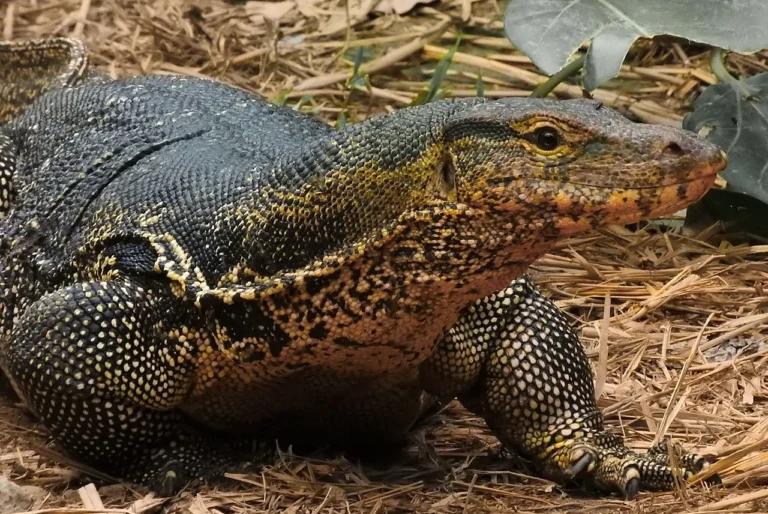23+ Dangerous Animals In Colombia And Their Characteristics
Examples of dangerous animals in Colombia are the Fer-de-Lance, a venomous snake with a potent hemotoxic venom, and the Black Caiman, a large crocodilian with aggressive tendencies. The Brazilian Wandering Spider is one of the most venomous spiders in the world, while the Bullet Ant delivers an extremely painful sting. Additionally, the American Crocodile, with its powerful jaws, and the Electric Eel, which generates strong electric shocks, are among the other dangerous species in Colombia’s diverse ecosystems. The Green Anaconda, one of the largest snakes, uses its immense strength to constrict its prey, while the Jaguar and Puma, large cats, are top predators that can be dangerous if threatened. Other notable dangerous animals include the Spectacled Caiman, Red-bellied Piranha, and Brown Recluse Spider, each posing unique risks in their respective habitats.
1. Fer-de-Lance (Bothrops asper)
The Fer-de-Lance (Bothrops asper) is one of the most dangerous and feared snakes in Colombia, known for its aggressive behavior and potent venom. As a highly venomous pit viper, it is responsible for a significant number of snakebite incidents in Central and South America. It can be found in a variety of habitats, from lowland rainforests to agricultural areas, often near rivers and streams. Its camouflaged scales blend into the surroundings, making it difficult to spot. When threatened, the Fer-de-Lance can strike with incredible speed, injecting a hemotoxic venom that can cause severe tissue damage, hemorrhage, and even death if not treated promptly. This snake’s ability to deliver a large amount of venom makes it a critical species to be aware of when exploring Colombia’s wilderness.
2. Bushmaster (Lachesis muta)
The Bushmaster (Lachesis muta) is among the largest and deadliest pit vipers in the Americas, with a significant presence in Colombia’s dense rainforests. Noted for its considerable size, which can exceed 3 meters (10 feet), this snake is highly venomous, possessing a potent neurotoxic and hemotoxic venom that can cause severe complications if bitten. Despite its size, the Bushmaster is elusive, preferring to remain hidden in deep forested areas. It is mostly nocturnal, and its bites can be fatal if not treated quickly with antivenom. Due to its elusive nature, it is a rare sight, but its reputation as a fearsome snake persists among those who live in or explore its native habitats.
3. Black Caiman (Melanosuchus niger)
The Black Caiman (Melanosuchus niger) is the largest predator in the Amazon basin, with populations extending into Colombia’s waterways. This massive reptile can grow up to 5 meters (16 feet) long and is known for its powerful jaws and aggressive demeanor. It inhabits rivers, lakes, and swamps, preying on fish, birds, and small mammals. The Black Caiman’s dark coloration provides camouflage in murky waters, making it a stealthy hunter. Despite a history of overhunting for its skin, its numbers have begun to recover, posing a threat to those who venture too close to its territory. Encounters with humans are rare but can be extremely dangerous due to the Black Caiman’s size and strength.
4. Spectacled Caiman (Caiman crocodilus)
The Spectacled Caiman (Caiman crocodilus) is a smaller yet still formidable member of the crocodilian family, commonly found throughout Colombia’s freshwater habitats. Named for the bony ridge between its eyes that resembles a pair of spectacles, this caiman can reach lengths of up to 2.5 meters (8 feet). It is an adaptable species, thriving in various environments, from rivers and lakes to marshes and even brackish coastal waters. While not as aggressive as some of its larger relatives, the Spectacled Caiman is a carnivorous predator, feeding on fish, birds, and small mammals. Though generally not a threat to humans, caution is advised when encountering them, especially during nesting seasons when they become more protective of their territory.
5. Green Anaconda (Eunectes murinus)
The Green Anaconda (Eunectes murinus) is one of the largest snakes in the world, with some specimens in Colombia reaching lengths of over 7 meters (23 feet). This giant constrictor inhabits swamps, rivers, and wetlands, where it lies in wait for prey, using its immense strength to coil around and suffocate its victims. Its diet includes large mammals, birds, and other reptiles, and it’s known to consume prey much larger than itself due to its ability to unhinge its jaws. Despite its fearsome reputation, the Green Anaconda rarely poses a direct threat to humans, although accidental encounters in the wild can be dangerous due to its size and strength.
6. Bullet Ant (Paraponera clavata)
The Bullet Ant (Paraponera clavata) is renowned for delivering one of the most painful insect stings in the world, often described as akin to being shot by a bullet. Found in Colombia’s rainforests, this large ant, about 2.5 centimeters (1 inch) long, is typically encountered on the forest floor and in trees. The pain from its sting can last for 24 hours or more, with intense throbbing, burning, and swelling. Despite its painful sting, the Bullet Ant is not inherently aggressive and will usually sting only when threatened or disturbed. It plays a significant role in its ecosystem, aiding in decomposition and serving as a food source for various predators.
7. Brazilian Wandering Spider (Phoneutria fera)

The Brazilian Wandering Spider (Phoneutria fera) is one of the most venomous spiders in the world, known for its aggressive behavior and potent neurotoxic venom. Native to the rainforests of South America, including Colombia, it gets its name from its tendency to wander the forest floor in search of prey, rather than building webs. Its venom can cause intense pain, muscle spasms, and in rare cases, death if not treated quickly. The spider is large and fast, with a leg span that can exceed 15 centimeters (6 inches). Despite its fearsome reputation, bites are rare, but when they occur, they require immediate medical attention.
8. Yellow Fever Mosquito (Aedes aegypti)
The Yellow Fever Mosquito (Aedes aegypti) is a small but dangerous vector for several diseases, including yellow fever, dengue fever, chikungunya, and Zika virus. It thrives in tropical and subtropical regions, including Colombia, where it breeds in standing water such as ponds, discarded containers, or even small puddles. This mosquito is known for its characteristic white markings on its legs and a marking in the shape of a lyre on its thorax. Female Aedes aegypti mosquitoes bite humans to obtain blood for egg production, often transmitting diseases in the process. The threat posed by this mosquito makes it a significant public health concern, with efforts focused on reducing its breeding grounds and controlling its population.
9. Dengue Mosquito (Aedes albopictus)
The Dengue Mosquito (Aedes albopictus), also known as the Asian tiger mosquito, is a significant disease vector in Colombia, spreading diseases like dengue fever, chikungunya, and Zika virus. This small mosquito is easily identifiable by its black and white striped legs and body. It breeds in similar habitats to Aedes aegypti, preferring stagnant water sources such as tires, buckets, and plant saucers. Though less associated with yellow fever, Aedes albopictus is highly adaptable, capable of thriving in both urban and rural settings, increasing the risk of disease transmission. Efforts to control its population focus on eliminating breeding sites and using insecticides, but its rapid spread and adaptability make it a persistent public health threat.
10. Brown Recluse Spider (Loxosceles laeta)
The Brown Recluse Spider (Loxosceles laeta) is a dangerous arachnid known for its venomous bite, which can cause necrosis and severe tissue damage. Found in Colombia, this spider is typically brown with a distinct violin-shaped marking on its back. It is a reclusive species, often hiding in dark, undisturbed areas like closets, attics, and basements. Bites from the Brown Recluse Spider can result in severe pain, ulceration, and, in some cases, systemic symptoms requiring medical attention. Although not aggressive, the spider will bite if threatened, making it essential to exercise caution when cleaning or moving items in areas where it might be hiding.
11. Golden Lancehead Viper (Bothrops insularis)
The Golden Lancehead Viper (Bothrops insularis) is a highly venomous snake found exclusively on Ilha da Queimada Grande, an isolated island off the coast of Brazil, but known to be a relative of the venomous Bothrops species found in Colombia. This snake has a distinctive golden coloration and is known for its potent hemotoxic venom, which can cause severe tissue damage, internal bleeding, and other complications if bitten. Though this specific species doesn’t inhabit Colombia, its relatives, such as the Fer-de-Lance, share similar characteristics. The isolated nature of the Golden Lancehead’s habitat has allowed it to develop unique traits, making it one of the most dangerous snakes in the world, with a high venom-to-weight ratio and an aggressive demeanor when threatened.
12. Piranhas (Various species)
Piranhas, particularly the Red-bellied Piranha (Pygocentrus nattereri), are known for their voracious appetite and sharp teeth, capable of tearing flesh with incredible speed and ferocity. Found in Colombia’s rivers and lakes, piranhas are generally carnivorous, feeding on fish, insects, and small mammals. Despite their fearsome reputation, they rarely attack humans unless provoked or experiencing extreme food scarcity. In most cases, piranhas are more scavengers than predators, preferring to feed on dead or dying prey. However, in large schools, they can become aggressive and potentially dangerous, especially during the dry season when food sources are scarce.
13. Red-bellied Piranha (Pygocentrus nattereri)
The Red-bellied Piranha (Pygocentrus nattereri) is one of the most notorious species of piranhas, known for its aggressive behavior and razor-sharp teeth. Commonly found in Colombia’s freshwater ecosystems, these piranhas are easily recognizable by their red undersides and strong, muscular bodies. Although generally not a direct threat to humans, the Red-bellied Piranha can become aggressive when in large groups or when food is scarce. They feed on fish, insects, and small mammals, using their powerful jaws to tear through flesh quickly. While their attacks on humans are rare, they have been known to cause injury during dry seasons or when provoked.
14. Tarantulas (Various species)
Tarantulas are large, hairy spiders found throughout Colombia’s diverse ecosystems, ranging from rainforests to deserts. Though their appearance can be intimidating, most tarantulas are not aggressive and rarely pose a threat to humans. However, some species can deliver a painful bite if provoked, and many have urticating hairs that can cause irritation or allergic reactions when thrown at a perceived threat. Tarantulas primarily feed on insects and small vertebrates, using their venom to subdue prey. Despite their fearsome reputation, they play a vital role in controlling insect populations and are a fascinating component of Colombia’s rich biodiversity.
15. Harpy Eagle (Harpia harpyja)
The Harpy Eagle (Harpia harpyja) is one of the largest and most powerful eagles in the world, with a presence in Colombia’s dense rainforests. Known for its impressive size and striking appearance, with a distinctive crest and massive talons, the Harpy Eagle is a top predator, feeding on monkeys, sloths, and large birds. It prefers remote, undisturbed habitats, making it a rare sight, but its presence indicates a healthy ecosystem. Despite its formidable hunting capabilities, the Harpy Eagle poses little threat to humans, as it generally avoids human-inhabited areas. However, its size and strength make it an awe-inspiring bird, contributing to the mystique and allure of Colombia’s wilderness.
16. Jaguar (Panthera onca)
The Jaguar (Panthera onca) is the largest big cat in the Americas and a top predator in Colombia’s rainforests and other wilderness areas. Known for its powerful build and distinctive rosettes on its fur, the Jaguar is a formidable hunter, capable of taking down large prey such as deer, capybaras, and even caimans. It is a solitary and elusive animal, preferring dense vegetation where it can stalk its prey with stealth and precision. Although Jaguars are generally not a threat to humans, their presence in the wild requires caution and respect for their territory. Jaguars play a crucial role in maintaining the ecological balance by controlling prey populations and contributing to the biodiversity of their habitats.
17. Puma (Puma concolor)
The Puma (Puma concolor), also known as the cougar or mountain lion, is a highly adaptable big cat found in various regions of Colombia, from dense forests to mountainous areas. It is a solitary and elusive predator, typically active at dawn and dusk. With a sleek body and powerful legs, the Puma is a skilled hunter, preying on deer, rodents, and smaller mammals. Although generally not a direct threat to humans, encounters can be dangerous if the animal feels threatened or cornered. The Puma’s adaptability allows it to thrive in different habitats, making it an important part of Colombia’s diverse wildlife. Despite its wide range, it is seldom seen due to its reclusive nature and preference for remote areas.
18. Tayra (Eira barbara)
The Tayra (Eira barbara) is a medium-sized mammal found in Colombia’s tropical forests and savannas. It is a member of the mustelid family, related to weasels and otters, with a slender, agile body and sharp teeth. Tayras are omnivorous, feeding on fruit, small mammals, birds, and reptiles. Although generally not aggressive, they can become dangerous when cornered or threatened, using their sharp claws and teeth to defend themselves. Their adaptability and varied diet allow them to thrive in different habitats, making them a common sight in Colombia’s forested areas.
19. Ocelot (Leopardus pardalis)
The Ocelot (Leopardus pardalis) is a small wild cat native to Colombia’s forests and grasslands. Recognized by its beautiful spotted coat and striking appearance, the Ocelot is a skilled predator, hunting at night for rodents, birds, and reptiles. While generally not a threat to humans, they are elusive and can become aggressive if threatened or cornered. The Ocelot plays a significant role in maintaining ecological balance by controlling smaller animal populations. Despite its widespread distribution, habitat loss and illegal poaching for its fur are significant threats to its survival.
20. Margay (Leopardus wiedii)
The Margay (Leopardus wiedii) is a small, agile wild cat found in Colombia’s tropical forests. It resembles the Ocelot but is smaller and more arboreal, with long legs and a flexible tail for climbing. The Margay is primarily nocturnal, hunting birds, rodents, and small mammals in the trees. Although it is not considered dangerous to humans, it can defend itself fiercely if threatened. The Margay’s unique ability to rotate its hind feet allows it to climb and descend trees with ease. Habitat loss and deforestation are key threats to this elusive species.
21. Capybara (Hydrochoerus hydrochaeris)
The Capybara (Hydrochoerus hydrochaeris) is the largest rodent in the world, commonly found in Colombia’s wetlands, rivers, and savannas. Despite its large size and imposing appearance, the Capybara is generally docile and harmless to humans. It is a social animal, living in groups and feeding primarily on grasses and aquatic plants. While not aggressive, Capybaras can be defensive if their territory or young are threatened. Their presence in the wild contributes to the health of ecosystems by aiding in the spread of plant seeds and serving as prey for larger predators like Jaguars.
22. Electric Eel (Electrophorus electricus)
The Electric Eel (Electrophorus electricus) is a unique freshwater predator found in Colombia’s rivers and swamps, capable of generating powerful electric shocks to hunt prey or defend itself. Despite its name, the Electric Eel is more closely related to catfish than true eels. It uses its electrical discharge to stun fish, allowing it to feed with ease. The shocks it produces can also deter potential threats, making it a dangerous animal to encounter in the wild. Although not inherently aggressive, the Electric Eel can deliver shocks powerful enough to cause injury or even death in humans under certain conditions.
23. American Crocodile (Crocodylus acutus)
The American Crocodile (Crocodylus acutus) is a large and potentially dangerous reptile found in Colombia’s coastal regions, rivers, and wetlands. It can grow up to 5 meters (16 feet) in length and is known for its powerful jaws and aggressive behavior when threatened. This crocodile is an apex predator, feeding on fish, birds, and small mammals, and plays a crucial role in maintaining the balance of its ecosystems. Encounters with humans are rare but can be dangerous, especially near nesting sites. The American Crocodile’s habitat has diminished due to human activities, but it remains a formidable presence in Colombia’s natural landscapes.
24. Giant River Otter (Pteronura brasiliensis)
The Giant River Otter (Pteronura brasiliensis) is the largest otter species, found in Colombia’s rivers and wetlands. It is a highly social and intelligent animal, living in family groups and displaying complex communication behaviors. Despite its playful demeanor, the Giant River Otter can be aggressive when protecting its territory or young, and its powerful jaws and sharp teeth make it capable of inflicting injury. This otter primarily feeds on fish and plays an important role in maintaining the health of aquatic ecosystems. Although it generally avoids humans, habitat loss and water pollution pose significant threats to its survival.
| Animal | Description |
| Fer-de-Lance (Bothrops asper) |
Highly venomous snake with hemotoxic venom. Aggressive and responsible for many snakebite incidents.
|
| Bushmaster (Lachesis muta) |
One of the largest and deadliest pit vipers. Known for potent neurotoxic and hemotoxic venom.
|
| Black Caiman (Melanosuchus niger) |
Large crocodilian, over 5 meters long, known for its powerful jaws and aggressive nature.
|
| Spectacled Caiman (Caiman crocodilus) |
Smaller crocodilian, with a bony ridge resembling spectacles. Found in various freshwater habitats.
|
| Green Anaconda (Eunectes murinus) |
Massive constrictor, one of the largest snakes in the world. Uses strength to suffocate prey.
|
| Bullet Ant (Paraponera clavata) |
Delivers one of the most painful stings. Found in rainforests. Generally not aggressive.
|
| Brazilian Wandering Spider (Phoneutria fera) |
Among the most venomous spiders. Known for its aggressive behavior and potent neurotoxic venom.
|
| Yellow Fever Mosquito (Aedes aegypti) |
Vector for several diseases including yellow fever and dengue fever. Thrives in tropical regions.
|
| Dengue Mosquito (Aedes albopictus) |
Known for spreading dengue fever, chikungunya, and Zika virus. Prefers stagnant water for breeding.
|
| Brown Recluse Spider (Loxosceles laeta) |
Venomous spider, bite causes necrosis and tissue damage. Reclusive and found in dark areas.
|
| Golden Lancehead Viper (Bothrops insularis) |
Highly venomous snake with hemotoxic venom. Only found on Ilha da Queimada Grande.
|
| Piranhas (Various species) |
Known for sharp teeth and aggressive behavior in groups. Generally feeds on fish but can be dangerous.
|
| Red-bellied Piranha (Pygocentrus nattereri) |
Notorious for aggressive behavior when food is scarce. Recognizable by red belly and strong jaws.
|
| Tarantulas (Various species) |
Large spiders with urticating hairs. Not usually aggressive, but can defend with bites or hairs.
|
| Harpy Eagle (Harpia harpyja) |
One of the largest eagles. Known for massive talons and powerful hunting skills. Rarely poses a threat to humans.
|
| Jaguar (Panthera onca) |
Largest big cat in the Americas. A top predator. Solitary and generally avoids human contact.
|
| Puma (Puma concolor) |
Large cat, also known as the mountain lion. Solitary and elusive. Potentially dangerous if cornered or threatened.
|
| Tayra (Eira barbara) |
Medium-sized mammal in the mustelid family. Generally not aggressive, but can defend when threatened.
|
| Ocelot (Leopardus pardalis) |
Small wild cat with a striking spotted coat. Not usually aggressive but can defend when cornered.
|
| Margay (Leopardus wiedii) |
Small arboreal wild cat. Agile and primarily nocturnal. Capable of defending itself if threatened.
|
| Capybara (Hydrochoerus hydrochaeris) |
Largest rodent in the world. Generally docile but can be defensive if threatened.
|
| Electric Eel (Electrophorus electricus) |
Generates powerful electric shocks. Can be dangerous if disturbed. Uses electricity to hunt and defend.
|
| American Crocodile (Crocodylus acutus) |
Large crocodile with powerful jaws. Aggressive when threatened or near nesting sites.
|
| Giant River Otter (Pteronura brasiliensis) |
Largest otter species. Social but can be aggressive when protecting territory or young.
|

